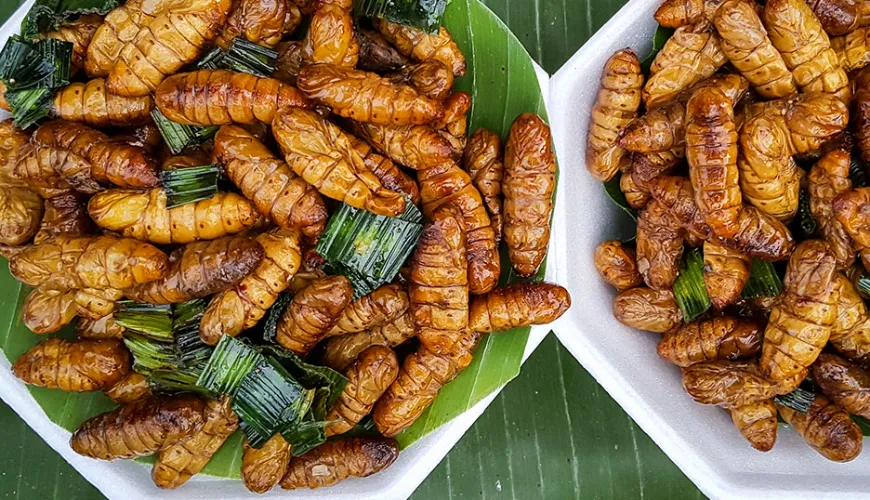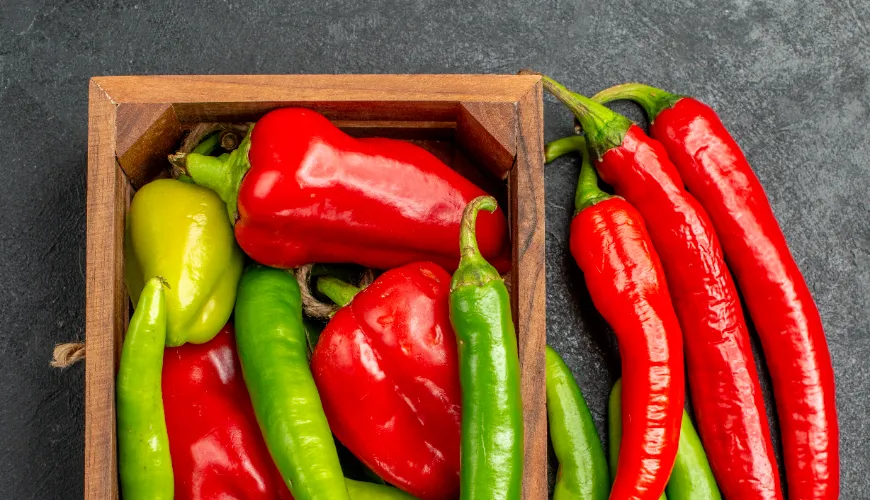
How to Handle a Surplus of Peppers in the Home Kitchen

What to Do with a Surplus of Peppers: How to Use a Bountiful Harvest in an Original and Tasty Way
Peppers are a popular vegetable widely grown in Czech gardens and greenhouses. Their colorful fruits are enticing with their sweet taste, crunchy texture, and versatile uses. But what do you do when you have more than you can consume? Surplus peppers can be used in many ways—whether fresh, dried, roasted, or pickled. If you're wondering what to do with an excess of peppers, here are some inspiring ways to process them so they bring joy for as long as possible.
Roasted Peppers - Intense Flavor and Easy Processing
One of the best ways to enhance the flavor of peppers is by roasting them. Roasted peppers have a tender, sweet flavor and can be used in many dishes. The preparation is very simple: just place them in an oven preheated to 200 °C and roast for approximately 20–30 minutes until the skin darkens and starts to separate. After roasting, you can let them steam in a closed container, which makes the skin easy to remove.
How to use roasted peppers? They are great as part of both cold and warm dishes—they're suitable for pasta, bruschetta, as a side dish to meat, or as a base for homemade pepper spread. They taste great with olive oil, garlic, and a touch of balsamic vinegar.
Sterilized Peppers
If you want to preserve peppers for a longer time, you can sterilize them in a sweet and sour brine. The classic Czech pickling method uses a mixture of water, vinegar, sugar, salt, and spices, such as bay leaf and peppercorns. You can leave the peppers whole or cut them into strips and add other vegetables, like onions or carrots. After pouring the hot brine over them, simply seal the jars and sterilize them in a pot of water for about 20 minutes.
Prepared this way, peppers are suitable as a side dish to meat dishes, with cheese, or just with bread and butter. Besides the classic sweet and sour brine, you can also try a spicy version with chili peppers, garlic, or herbs.
Dried Peppers - Concentrated Flavor for Sauces and Soups
Another way to handle excess peppers is by drying them. Drying removes the water from the peppers, which enhances their flavor and aroma. You can dry them in several ways—in a fruit dryer, in an oven at a low temperature (around 50 °C), or traditionally hung on a string in a dry and airy place.
Dried peppers can be ground into powder and used as seasoning in sauces, soups, stews, or marinades. If you leave them whole, you can add them directly to broths or slowly stew them with meat, adding a strong flavor to the dish.
Pepper Paste - A Base for Many Dishes
If you enjoy the intense flavor of peppers, you can prepare homemade pepper paste. To make it, simply roast the peppers, peel them, and blend with a bit of olive oil and salt. The resulting paste can be stored in the fridge for several weeks or sterilized in jars.
Pepper paste is great as a base for sauces, spreads, or on pasta. You can also mix it with yogurt or sour cream to create a delicious dip for bread or grilled meat.
Stuffed Peppers - A Traditional Czech Classic
When you're unsure what to do with an excess of peppers, one option is to prepare stuffed peppers. This traditional dish can be variably adjusted—stuff peppers with a mixture of minced meat, rice, legumes, or vegetables.
The classic version consists of minced meat mixed with rice, spices, and egg. The peppers are then filled with this mixture, covered with tomato sauce, and slowly stewed. If you prefer a vegetarian version, try a filling of quinoa, lentils, or cheese.
Pepper Soup
Peppers can also be used as a base for a delicious soup. Simply sauté them with onion, garlic, and carrot in olive oil, add broth, and let them simmer. Then blend the mixture and season with salt, pepper, and, for a milder taste, a splash of cream.
If you prefer a spicier variant, you can add a chili pepper or a bit of smoked paprika, which adds depth to the soup.
Homemade Lečo - A Quick and Simple Way to Use Peppers
Lečo is one of the simplest and tastiest ways to use surplus peppers. The traditional recipe combines peppers, tomatoes, onions, and eggs, but you can adjust it to your liking. Lečo can be sterilized in jars, providing a ready-made base for a quick dinner during the winter months.
If you like bolder flavors, you can add sausage, zucchini, or mushrooms to lečo. Serve it with rice, bread, or as a side to meat.
Fermented Peppers
If you want to not only preserve peppers but also boost your health, try fermentation. Fermented peppers acquire a mildly sour taste and are rich in probiotics, which benefit digestion.
The procedure is simple—cut the peppers into pieces, place them in sterile jars, and cover with a salt solution (about 2% salt per liter of water). Add seasonings to taste, such as garlic, dill, or mustard seeds, and let them ferment at room temperature for several days. Fermented peppers can be eaten on their own or added to salads and sandwiches.
If you're wondering what to do with an excess of peppers, there are many possibilities. You can roast, dry, pickle, blend into paste, make soups, or ferment them. Each processing method offers unique flavor experiences and allows you to enjoy peppers outside of their season. Whatever option you choose, it's always a great way to make the most of this vegetable.

